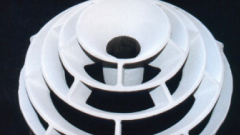WEAR RESISTANT COATINGS
PROTECT AGAINST ABRASION, EROSION, CORROSION, FRETTING/GALLING, CAVITATION, BRINELLING.
REPAIR COATINGS
NO NEED TO SCRAP AN EXPENSIVE PART. REPAIR OR BUILD UP TO A SPECIFIED SIZE. EXTEND PART LIFE.
RELEASE COATINGS
FEATURING DURA-SLIK™ FLUOROPOLYMER COMBINED WITH THERMAL SPRAYED COATING PROVIDES WEAR RESISTANCE ALONG WITH RELEASE PROPERTIES.
THERMAL BARRIER PROTECTION COATINGS
RESISTS TEMPERATURES UP TO 3000° F. ALLOWS THE USE OF LESS EXPENSIVE SUBSTRATE.
LOW COEFFICIENTOF FRICTION COATINGS
COATED COMPONENTS HAVE THE ABILITY TO PERFORM AT HIGHER SPEEDS.
SURFACE TRACTION COATINGS
Long lasting surface finishes that prevent slippage, interruptions & breaks. Improves web tracking and tension control.
BRUSH PLATING
Repair or rebuild to a specified size, tolerance and surface finish. Plate an entire surface or target a small localized area.
GENERAL CAPABILITIES
Services, coating features, part size capability.
Using HVOF Coating to Improve Corrosion Resistance
High-Velocity Oxygen Fuel coating, frequently known as HVOF, is often a thermal spray coating course of action that increases resistance to corrosion and wear by restoring a component’s initial dimensions or functionality qualities. Molten or semi-molten coating materials are sprayed directly onto the substrate working with a high-pressure gas stream.
What is HVOF Coating?
HVOF is applied via flame spray; a spray head that mixes oxygen plus a combustible fuel (a mix of kerosene, acetylene, propylene, and hydrogen) to provide a powdered friction-reducing coating material. The resulting mixture is sprayed within a jet-like effect at extreme temperatures involving 5000-6000°F at velocities of more than 7000 feet per second.
The intense heat and spray stress of HVOF combine to create a coating of exceptional hardness, outstanding adhesion for the substrate material, and substantial resistance to corrosion. HVOF generally exceeds bond strengths of 12,000 psi in between the coating and substrate, which makes it possible for HVOF coating to retain nearly 100% of their put-on and corrosion resistance in high-temperature environments.
High-Velocity Oxy-Fuel (HVOF) coatings fight corrosion by enhancing the surface consistency, hardness, and bond strength of several coating sorts, which include tungsten carbide, chrome carbide, nickel alloys, cobalt alloys, and various carbon and stainless steels. The HVOF course of the action centers on a flame spray — spray head that mixes oxygen, a combustible fuel (kerosene, acetylene, propylene, and hydrogen) as well as a powdered friction-reducing coating material. A jet-like nozzle delivers coatings at temperatures of 5-6000o F at velocities beyond 7000 feet per second. HVOF enables coatings to retain their corrosion-resistant properties in high-temperature environments, or in applications that ought to endure mechanical anxiety from higher levels of friction.
HVOF Coating in the Industrial Atmosphere
HVOF offers superior protection in comparison to other thermal spray coatings. That mentioned, HVOF is just not deployed as often as some other industrial coating processes. There are actually a number of motives for this, with the price getting a significant factor inside the calculation.
Some components are not appropriate for the HVOF course of action. HVOF can’t be used for surface engineering of inner surfaces – one example is, the interior surfaces of cylindrical objects. Narrower size distributors have to be employed to ensure desirable HVOF benefits.
That said, the principal issue that restrains some organizations from adopting HVOF is usually a matter of safety. Specialized application equipment must be operated as outlined by the highest safety standards. Most industrial enterprises should really seek third-celebration HVOF expertise.
This higher level of bond strength also makes HVOF coating useful for element repair. HVOF coating might be applied in thicknesses of up to 1/2″ devoid of compromising their strength, producing it attainable to restore worn component surfaces with no more machining required.
HVOF: What Exactly is it Used For?
HVOF is extensively accepted in a lot of demanding industries where applications are in pretty intense environments such as within the oil and gas industries, steel mills, energy generation, valves and pumps, and in really hard chrome replacement. HVOF produces extremely dense, hard-wearing coatings which can then be traditionally silicon carbide ground, or in some situations need to be diamond ground or polished, to make a high amount of surface finish.








